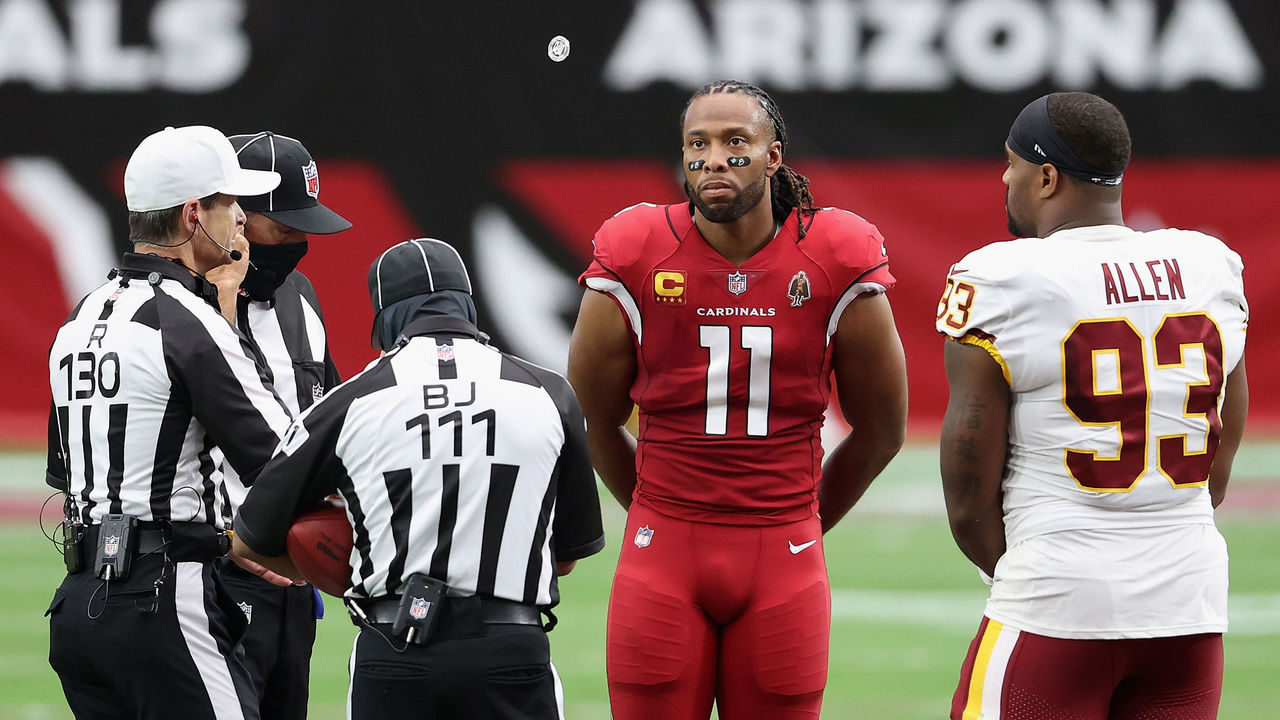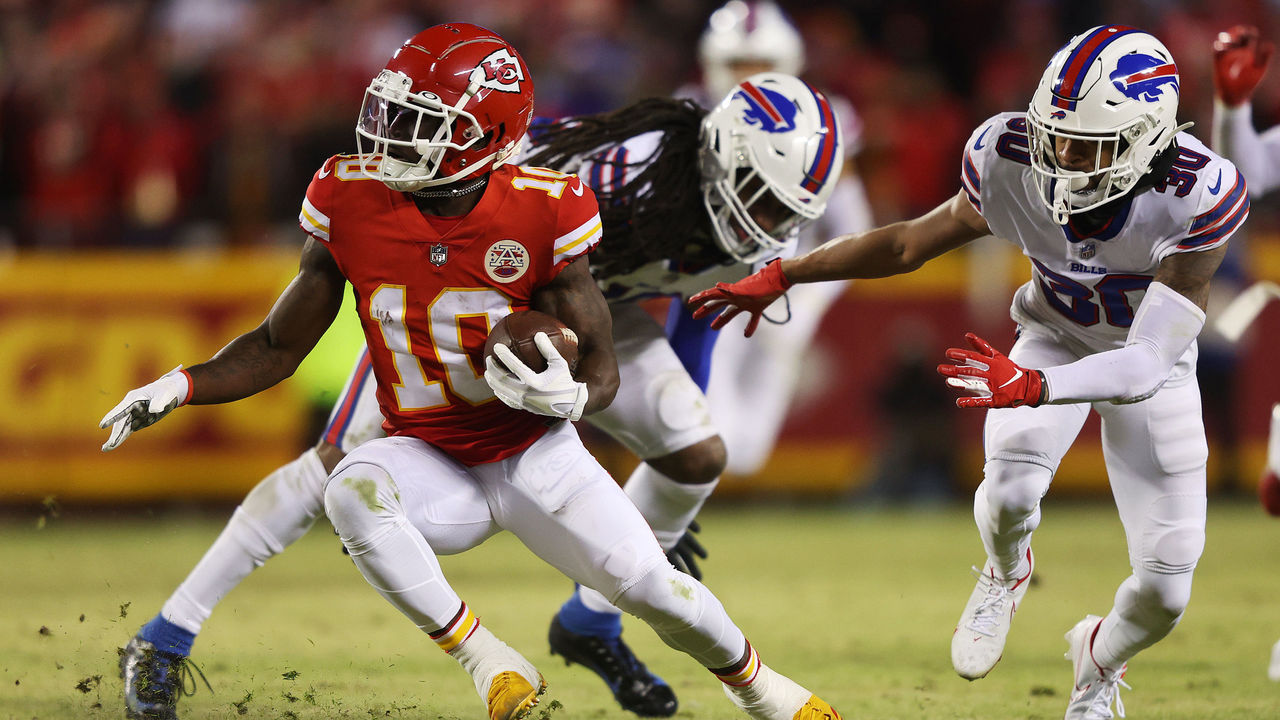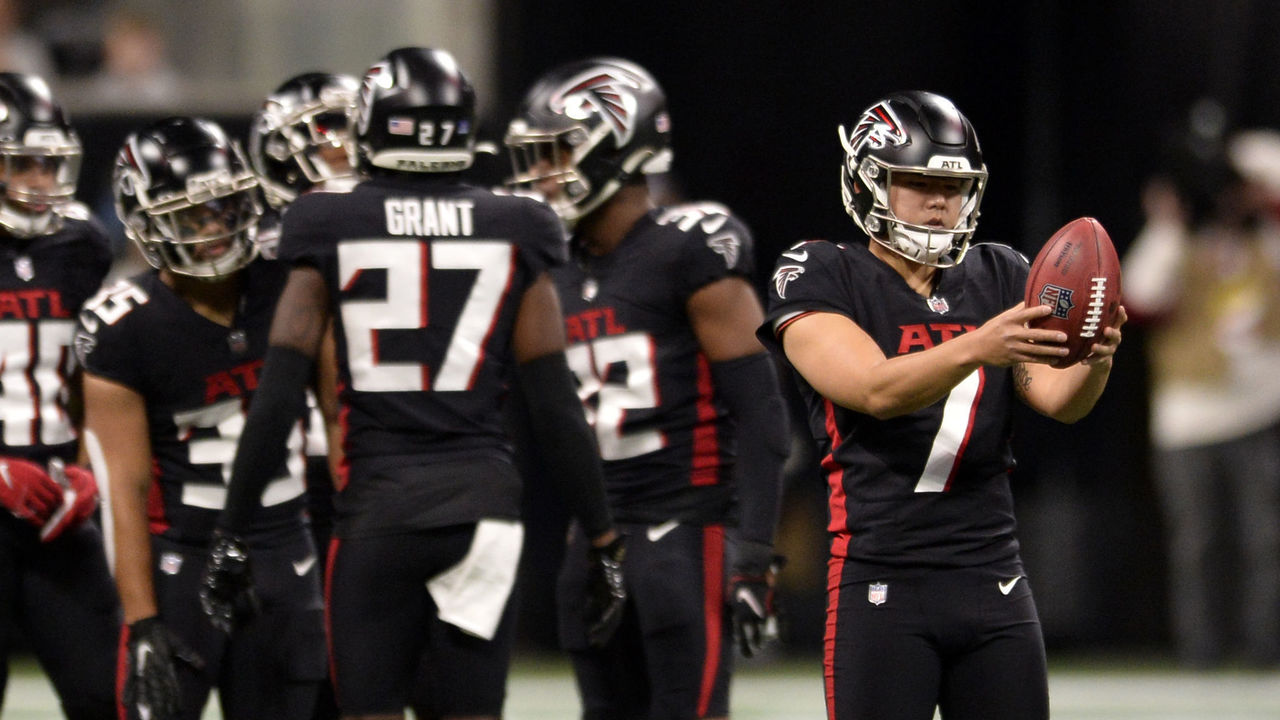How the NFL can fix its overtime rules
The ending of that bonkers Bills-Chiefs game last week put a spotlight back on the NFL's overtime rules, particularly on whether it's fair to have a sudden-death outcome hinge on the randomness of a coin toss.
Both quarterbacks - Josh Allen of the Bills and Patrick Mahomes of the Chiefs - went full tilt in the final two minutes of regulation. The thrilling result still seems impossible: four possessions, 25 points scored, three lead changes, and a tie. The last QB to have the ball was likely going to win. Kansas City won the coin toss that determined the first possession of overtime, and Buffalo never got to possess the ball in OT at all.
The NFL has adjusted its overtime rules a few times in recent years, and The Washington Post's Mark Maske reported this week that the competition committee is expected to consider possible changes this offseason. But what would constitute an ideal solution? There's lots to consider. Let's dive in.
Why does the NFL do overtime this way?
The current format - as imperfect as it is - maintains the same structure of regulation play. The same down-and-distance rules apply, which avoids any kind of artificial field-position scenarios while also keeping special teams involved. Both teams start clean, like they do at the beginning of a game. It's just that the first team to score wins.
Unless they kick a field goal.
Well, right. It used to be that the receiving team could drive part way up the field, kick a field goal, and win the game. That rule was changed for the postseason in 2010, and for the regular season in 2012. Today, the team that gets the ball first must score a touchdown on that first possession to win. A first-possession field goal allows the other team a chance to get the ball at least once. That team can then tie, win, or lose, depending on the outcome of its possession.
 Christian Petersen / Getty Images
Christian Petersen / Getty ImagesWhy the coin flip?
The coin flip is supposed to introduce neutrality to the process. But as offenses in recent years have improved, owing to rules changes and an emphasis on the efficiencies of passing the ball, the coin flip has seemed to create an advantage for the teams that win the toss - at least in the playoffs. Even then, though, it's a bit more complicated than that.
Wait. What do you mean "at least in the playoffs"?
NFL Media's Ian Rapoport shared a stat from NFL Research the other day and it showed that the team that wins the toss is 86-67-10 in all overtime games (regular season and playoffs) under the current OT rules. That looks like an obvious disparity, but it's really just a 53% win rate for the correct coin-flip guessers. However, this stat doesn't take into account how often the team that wins the toss scores on its first possession.
What would that rate be?
theScore used Pro Football Reference to sift through all 163 games played under the current overtime rules. Contrary to popular belief, most OT games do not end on the first possession. The winning team has scored just 35 first-possession touchdowns, though there have also been three games that ended because of a first-possession pick-6 by the defense. That's still a rate of just 21.4% of games ending because the receiving team scored a TD the first time it had the ball, with an average number of possessions of 2.6. That means nearly four out of five overtime games are decided with multiple possessions. Who knew!
Huh. Why does it seem so skewed the other way?
Because the playoffs have been much, much different.
Oh? How so?
There have been 11 overtime playoff games under the current OT rules. The team that's won the toss has won 10 of those games, and seven of those 10 victories involved first-possession touchdowns. Overtime games in the playoffs have averaged only 1.8 possessions. Chiefs-Bills was just the latest to fit that trend.
Wow. So that's why winning the toss seems to be so favorable.
Exactly. It's a small sample size, but it still makes for a striking (and obvious) disparity.
Michael Lopez, the NFL's director of data and analytics, told theScore that he's not surprised that playoff games have been turning out differently. For one thing, the possibility of a tie - which counts as half of a win in the standings - incentivizes the receiving team to be less aggressive on that first drive. In the postseason, that dynamic changes because ties aren't possible.
"We did some research on this," Lopez said. "I don't think it's an accident that teams in the postseason are 10-1 that have received the ball. You can look at how often they pass, you can look at how far downfield they pass. It's a different strategy. You could make the argument that, in the postseason, because teams aren't worried about ties, they can be a little more aggressive, which does increase their chance of winning."
We as viewers feel cheated when, say, Mahomes doesn't get a chance to get even with Tom Brady at the end of the 2018 AFC title game. Or when Allen loses and never sees the field again after giving the Bills the dang lead with 13 seconds remaining in regulation. Well, except for when the Steelers got Tebowed by the Broncos on the first possession of OT in a playoff game 10 years ago. I'm a Steelers fan. That will always be objectively hilarious.
 Jamie Squire / Getty Images
Jamie Squire / Getty ImagesThe Bills also could have played better defense. Or at least a defense that wasn't so soft.
Yes, there's that, too. But in today's game, with today's rules, offenses have an advantage over defenses. Having the ball increases a team's chances of winning, which is why teams are taking more risks on fourth down and being more aggressive about maximizing their possessions. The Bills had the league's No. 1-ranked defense, for crying out loud. It didn't matter.
Why not go with the college-style OT?
OK, so in college, each team gets the ball at the opponent's 25-yard line, and they're ensured an equal number of possessions. Seems fair, right? Under that format, the team that gets the ball second has an advantage because it always knows exactly how many points it needs to win the game. This system also creates a completely different game.
The college approach removes the game clock and field position from the equation. There are no kickoffs or punts. A system like this also creates a dynamic that can artificially inflate stats and scoring. Remember when Texas A&M beat LSU 74-72 in seven overtimes a few years back? That game was tied at 31 at the end of regulation.
The college game altered its OT rules in 2021 to force teams to take two-point conversion attempts beginning with the third overtime. Back in October, Illinois and Penn State wound up poking each other in the eyes for nine OTs. No one wants to see that.
What about just playing a full 10- or 15-minute overtime period?
This one also has merit, but it also still benefits the team that receives the ball, since they stand to have more possessions than the kicking team. A system like this would also lead to substantially more scrimmage plays, which increases the risk for injury, which (cynically) is something teams that have to play another postseason game the following week are going to be concerned about.
Lopez shared some broad comparisons of the risks and rewards of several methods on Twitter this week.
Have been asked about NFL overtime rules a few times
- Michael Lopez (@StatsbyLopez) January 27, 2022
Here is an unofficial review sheet with +s and -s to frequently mentioned alternatives pic.twitter.com/cdzpu1EVWA
Is there anything else that can be done?
A recent caller to the "Rich Eisen Show" suggested coming up with a way for both teams to know who gets the ball at the start of overtime before overtime even happens. The caller said the home team should get the ball, but after some discussion, Eisen said that if the team that wins the toss at the start of the game opts to defer - as is now the norm - it also forces that team to defer to start OT.
This would force teams to make a decision at the start of the game on whether to risk losing the ball at the start of OT, and to know this throughout the game. All sorts of in-game strategy would be affected, since teams would know what they're up against if they risk going to OT.
So if the Chiefs had more than 13 seconds the other night they might have tried to score a TD instead of a field goal if they knew all along the Bills would get the ball at the start of OT.
Correct.
That ain't a bad idea.
There's also the "spot and choose" option.
 Icon Sportswire / Getty Images
Icon Sportswire / Getty ImagesWhat's that?
Pro Football Talk's Michael David Smith first proposed "spot and choose" in an article for Football Outsiders way back in 2003. The Ravens formally proposed a variation of this idea last offseason, but it didn't pass.
OK, but what is it?
Smith's proposal would have the team that wins the coin toss decide which yard line the ball would be kicked off from, with the other team determining whether they want to kick off or receive.
"Losing the toss really wouldn't be any disadvantage, because both teams can determine what they think is a fair spot for the opening kickoff," Smith wrote.
"Essentially, this is like an auction. Both teams want to get the ball first, so it will be awarded to the team that is willing to give up more in field position to get it. In this scenario, neither team can have any complaint. The team winning the toss can't claim the field position was unfair because it chose the field position. The team losing the toss can't claim the field position was unfair because it chose whether to take the ball deep in its own territory or try to pin the opponents deep."
 Edward M. Pio Roda / Getty Images
Edward M. Pio Roda / Getty ImagesThe proposal the Ravens submitted to the league last year removed the kickoff from the beginning of the equation. Their idea simply would have allowed the team that won the toss to pick the spot for the first possession and the team that lost to decide whether they want possession based on that spot.
That sounds interesting, too!
Richard Thaler, a Nobel Prize-winning economist, told The Wall Street Journal last year that Baltimore's suggestion was "very thoughtful and a clear improvement over the current rules" and said it was "good that the league is thinking about it."
It would certainly be fascinating to see what factors teams might consider when deciding where to put the ball.
Is it going to come up again?
Possibly. Maske's story in the Post indicated that it's "far from certain that any modifications will be enacted," with one person familiar with the matter telling him that a change in the postseason OT rules could be considered.
The NFL's competition committee usually meets to hash out possible rules changes early in the offseason so the owners can vote on them at the league's annual meeting. This year, those meetings are from March 27-30 in Palm Beach, Florida. Mark your calendar.
Dom Cosentino is a senior features writer at theScore.
Copyright (C) 2022 Score Media Ventures Inc. All rights reserved. Certain content reproduced under license.